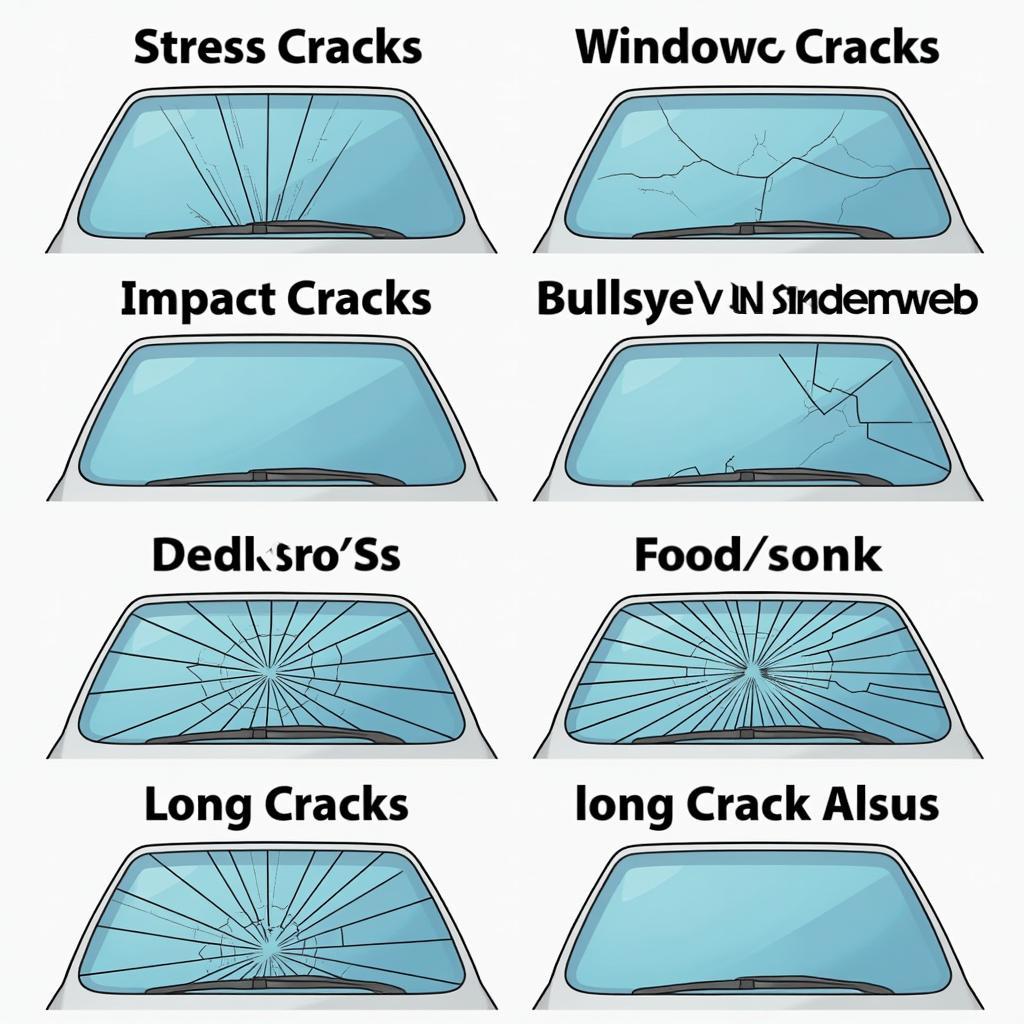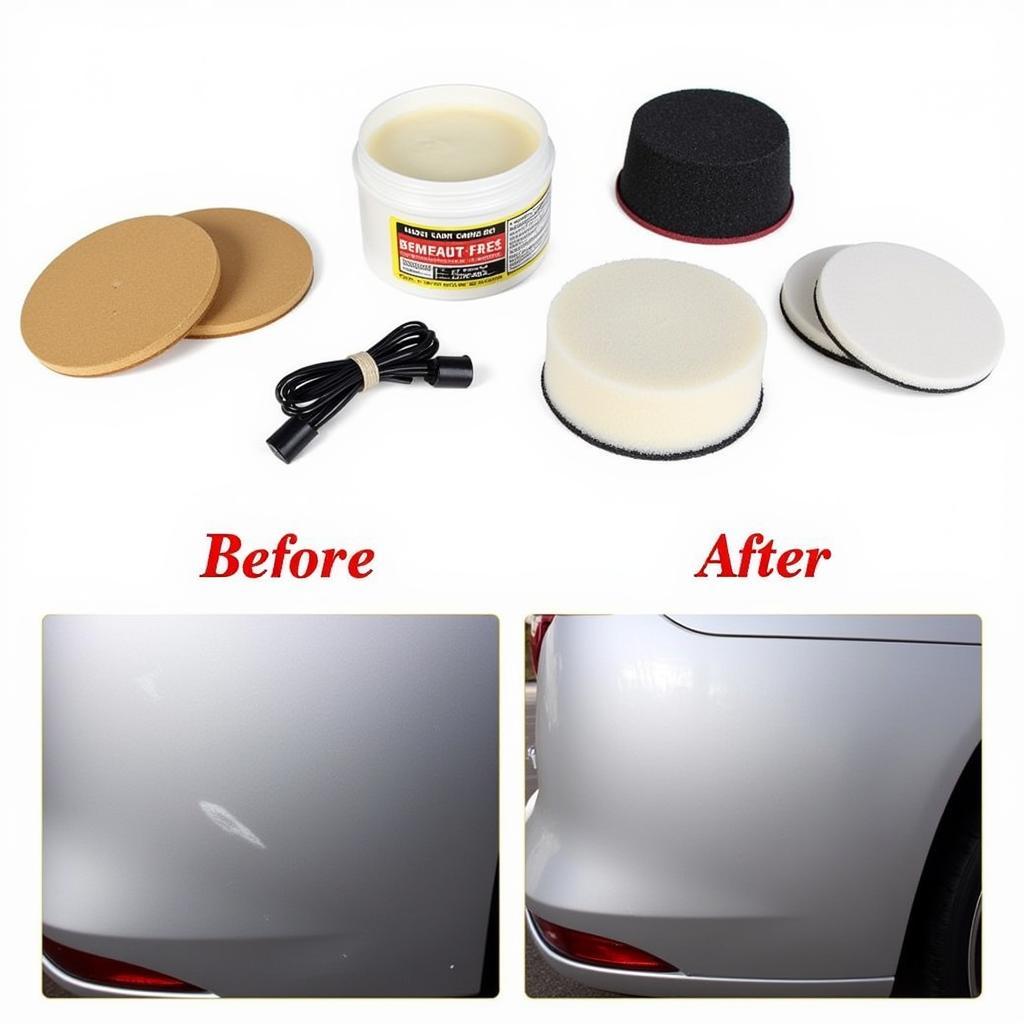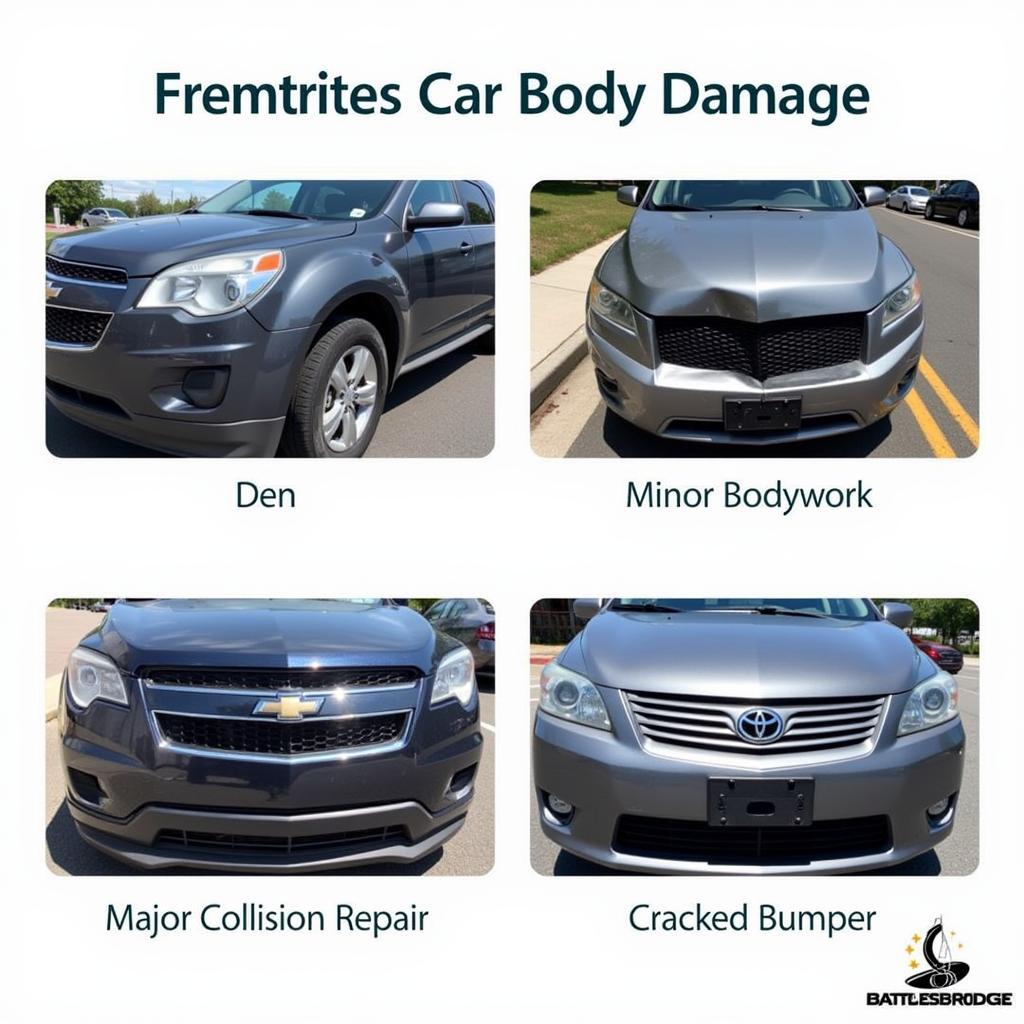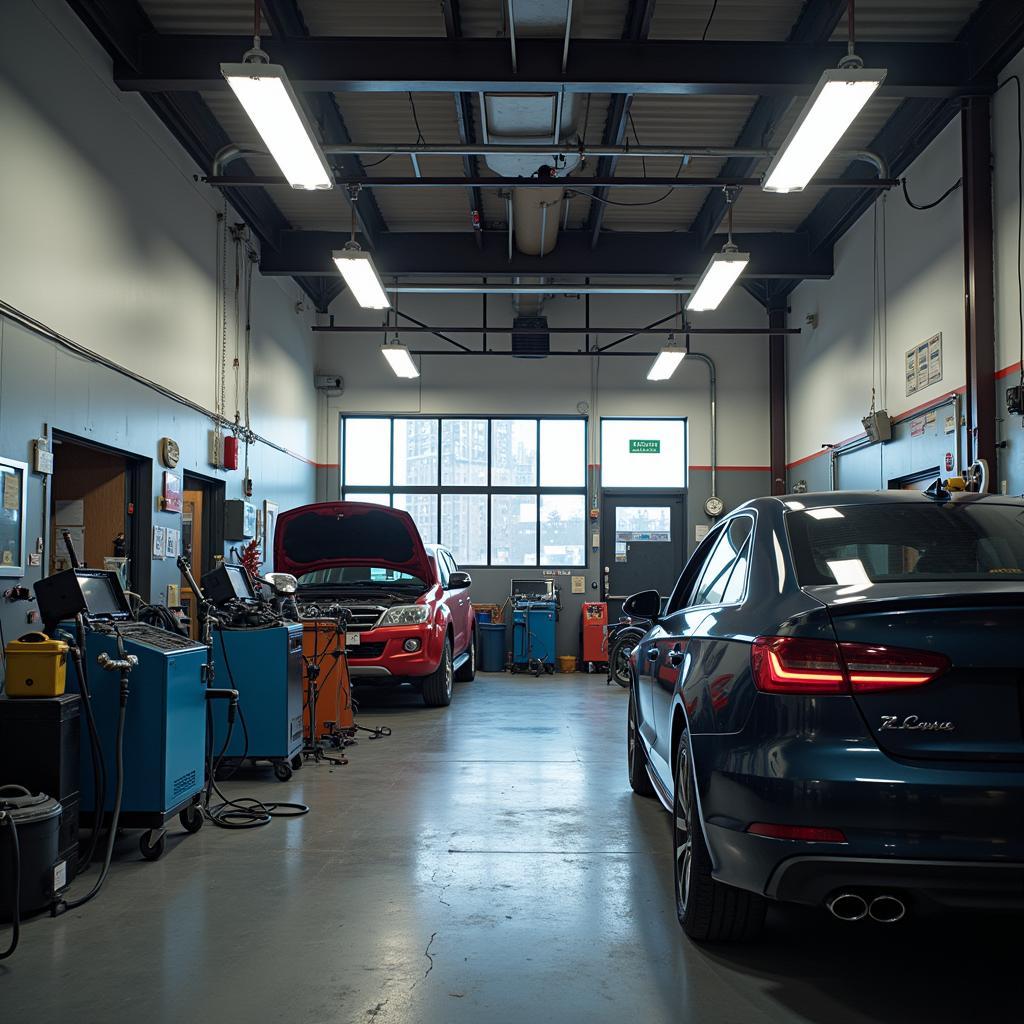
Types of Car Window Cracks
Dealing with a cracked car window is not just an aesthetic nuisance; it can compromise your safety and vehicle security. Whether it’s a minor chip or a sprawling crack, understanding your repair options is crucial. This guide will explore various methods to Repair Car Window Cracks, helping you make informed decisions for your vehicle.
Types of Car Window Cracks and Their Causes
Before diving into repair options, it’s crucial to identify the type of crack you have. Different cracks require different approaches. Here’s a breakdown:
- Stress Cracks: These thin, often hairline cracks often originate from the edges of the window and can be caused by temperature fluctuations, vehicle flexing, or improper installation.
- Impact Cracks: As the name suggests, these cracks result from an object striking the windshield. They typically have a “bullseye” surrounded by spiderweb-like cracks.
- Chip Cracks: Small, chipped areas on the windshield are usually caused by flying debris like rocks.
- Long Cracks: These extend across a significant portion of the windshield and require immediate attention due to safety concerns.
 Types of Car Window Cracks
Types of Car Window Cracks
DIY vs. Professional Repair: What’s Right for You?
Deciding whether to tackle the repair yourself or seek professional help depends on the severity and type of crack:
DIY Repair:
- Suitable for: Minor chips and cracks that are smaller than a dollar bill.
- Methods: DIY repair kits, often using resin and a curing device, can be effective for small imperfections.
Professional Repair:
- Suitable for: Larger cracks, cracks that obstruct the driver’s vision, cracks on the edge of the windshield, or complex damage.
- Methods: Professionals have specialized tools and expertise to perform windshield repairs or replacements when necessary.
How to Repair Minor Car Window Cracks at Home
For those inclined to address minor cracks themselves, follow these general steps:
- Clean the Area: Thoroughly clean the area around the crack with soap and water, ensuring no dirt or debris remains.
- Prepare the Resin: Follow the instructions of your chosen DIY repair kit to prepare the resin.
- Apply the Resin: Carefully apply the resin to the crack, ensuring it fills the entire crevice.
- Remove Air Bubbles: Use a plastic squeegee or card to remove any trapped air bubbles within the resin.
- Cure the Resin: Follow the kit’s instructions to cure the resin using UV light or a curing strip.
- Scrape Excess Resin: Once cured, carefully scrape away any excess resin with a razor blade, achieving a smooth finish.
Important Note: While DIY kits can be effective for minor cracks, they might not offer a perfect fix and could even worsen the damage if not applied correctly.
When to Seek Professional Car Window Crack Repair
Consider professional repair in the following scenarios:
- Large or Complex Cracks: Cracks larger than a dollar bill, those affecting the driver’s vision, or cracks with multiple branches require professional attention.
- Edge Cracks: Cracks on the edge of the windshield compromise its structural integrity and should be addressed by professionals.
- Unsuccessful DIY Attempts: If you’ve attempted DIY repair and it hasn’t yielded satisfactory results, it’s best to consult a professional.
The Cost of Car Window Crack Repair
Several factors influence the cost of repairing a car window crack:
- Severity and Type of Crack: Minor chips are generally less expensive to repair than long or complex cracks.
- Windshield Replacement vs. Repair: In some cases, the damage might be too extensive for repair, necessitating a full windshield replacement, which is more expensive.
- Location and Service Provider: Prices can vary depending on your location and the chosen repair shop or dealership.
“Ignoring a small crack can lead to much larger problems and expenses down the road. It’s always best to address car window cracks promptly,” advises John Miller, a senior automotive technician at CarCare Experts.
Preventing Future Car Window Cracks
While some instances are unavoidable, these tips can help minimize the risk:
- Maintain Safe Distance: Keep a safe distance from vehicles ahead to avoid being struck by flying debris.
- Avoid Parking Under Trees: Falling branches or debris from trees can damage your windshield.
- Careful Driving on Gravel Roads: Reduce speed on gravel roads, as loose stones can chip the windshield.
- Address Temperature Fluctuations: Avoid extreme temperature changes within your vehicle, as they can stress the windshield.
Conclusion
Addressing car window cracks promptly is crucial for your safety and vehicle’s well-being. By understanding the types of cracks, repair options, and preventive measures, you can make informed decisions to keep your car in optimal condition. Remember, if you’re ever unsure about a crack, it’s always best to consult a professional for an expert assessment and guidance.
For further assistance or inquiries regarding car window crack repair, feel free to reach out to our team of experts via WhatsApp at +1(641)206-8880 or email us at [email protected]. We provide 24/7 customer support to cater to all your car repair needs.




